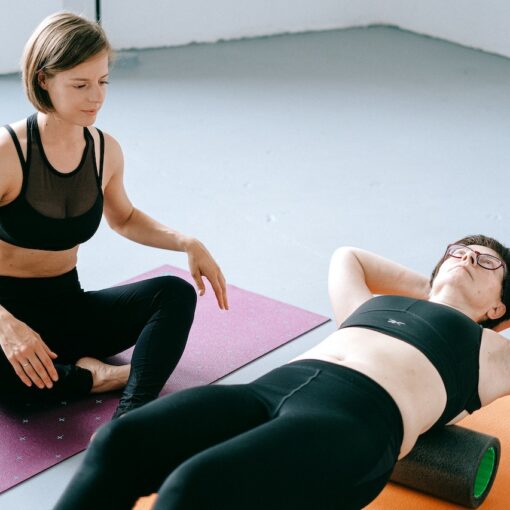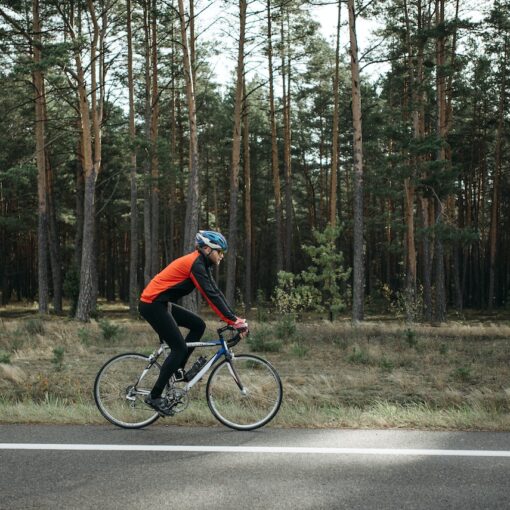Stretching is an essential part of any runner’s training routine. Regular stretching can help improve flexibility, range of motion, and blood flow to muscles, enabling them to work most effectively. It can also help prevent injuries, reduce soreness and tightness, and aid recovery.
There are two main types of stretching: dynamic and static. Dynamic stretching involves moving the body through a range of motions, such as leg swings, before a workout to warm up the muscles and prepare them for exercise. Static stretching, on the other hand, involves holding a stretch for a period of time, usually after a workout, to improve flexibility and prevent muscle soreness.
For runners, stretching is particularly important for the legs, including the hamstrings, quadriceps, and calf muscles, as well as the lower back and hip flexors. Regular stretching can help reduce the risk of injuries such as hamstring strains and plantar fasciitis, which are common among runners. It can also improve posture and muscle strength, reducing the risk of falls and chronic conditions such as low back pain. In addition to physical benefits, stretching can also provide stress relief and emotional benefits for athletes.
The Importance of Stretching for Runners
Stretching is an essential part of any runner’s routine. It helps improve flexibility, range of motion, and mobility, while also reducing the risk of injury and pain. Runners who stretch regularly experience less soreness and recover faster from injuries.
When runners exercise, their muscles can become shortened, making them tight and inflexible. Regular stretching helps to keep the muscles flexible, strong, and healthy. It also helps to maintain a range of motion in the joints. Without regular stretching, the muscles can become weak and unable to extend fully, which can lead to injury and pain.
There are two main types of stretching: dynamic and static. Dynamic stretching involves moving the muscles through a range of motion, while static stretching involves holding a stretch for a period of time. Both types of stretching are beneficial for runners, but dynamic stretching is more effective as a warm-up before a run, while static stretching is best done after a run when the muscles are warm.
Stretching can also help improve blood flow to the muscles, which can help reduce the risk of injury and pain. It can also help improve posture and reduce the risk of falls. Regular stretching can also help relieve emotional stress and provide stress relief.
Some of the most important muscle groups for runners to stretch include the hamstrings, quadriceps, gluteal muscles, hip flexors, calves, and feet. It’s also important to stretch the shoulders, neck, and back to maintain good posture and reduce the risk of back pain.
In addition to stretching, runners can also benefit from foam rolling, active stretching, and leg swings. A physical therapist can also provide guidance on the best stretches for a runner’s specific needs and help with any chronic conditions or injuries.
Overall, regular stretching is essential for runners to improve their flexibility, range of motion, muscle strength, and injury risk. Incorporating stretching into a regular warm-up and cool-down routine can help runners stay healthy, prevent injuries, and improve their performance.
Types of Stretching for Runners
Stretching is an essential part of any runner’s training routine. It helps improve flexibility, range of motion, and blood flow, which in turn, can enhance performance and prevent injuries. There are two main types of stretching: static and dynamic.
Static Stretching
Static stretching involves holding a stretch in a comfortable position for a set amount of time, usually 10-30 seconds. This type of stretching is best done after a run when the body is warm. It can help increase range of motion and blood flow, which, in turn, helps with recovery and mental stress. Examples of static stretches for runners include:
- Hamstring stretch: Sit on the ground with your legs straight out in front of you. Reach forward and try to touch your toes.
- Quadriceps stretch: Stand on one leg and pull the other heel towards your buttocks. Hold onto something for balance if needed.
- Calf stretch: Stand facing a wall with one foot behind the other. Lean forward, keeping your back heel on the ground, until you feel a stretch in your calf.
- Hip flexor stretch: Kneel on one knee with the other foot in front of you. Lean forward until you feel a stretch in your hip.
Dynamic Stretching
Dynamic stretching involves moving the body through a range of motion, usually in a controlled manner. This type of stretching is best done before a run when the body is still relatively cold. It can help warm up the muscles, increase flexibility, and reduce the risk of injury. Examples of dynamic stretches for runners include:
- Leg swings: Stand facing a wall and swing one leg forward and backward, then side-to-side.
- High knees: Run in place, lifting your knees high towards your chest.
- Butt kicks: Run in place, kicking your heels up towards your buttocks.
- Walking lunges: Take a step forward and lower your body until your front knee is at a 90-degree angle, then step forward with the other leg.
Regular stretching can help prevent muscle soreness, tightness, and injuries. It is important to listen to your body and not push yourself too hard, especially if you have a chronic condition or are recovering from an injury. If you have any concerns, it is always best to consult with a physical therapist or healthcare professional.
The Benefits of Static Stretching for Runners
Static stretching is a type of stretching where you hold a stretch in one position for a certain amount of time, usually 10-30 seconds. It is a popular form of stretching among runners as it can improve flexibility and range of motion. Here are some benefits of static stretching for runners:
Reduces the Risk of Injury
Static stretching before a run can help reduce the risk of injury. It can help warm up the muscles and prepare them for the run. By stretching the muscles before running, they become more flexible and less likely to tear or strain during the run. It is important to note that static stretching should be done after a proper warm-up, such as jogging or leg swings.
Reduces Muscle Soreness
Static stretching after a run can help reduce muscle soreness. It can help improve blood flow to the muscles and reduce the buildup of lactic acid, which can cause soreness. By stretching the muscles after running, they can recover faster and be ready for the next run.
Improves Flexibility and Range of Motion
Regular static stretching can improve overall flexibility and range of motion. This can help runners improve their performance and prevent injuries. By increasing flexibility, runners can move more freely and with less tightness in their joints and muscle groups.
Targets Specific Muscle Groups
Static stretching can target specific muscle groups that are commonly tight in runners. This can include the hamstrings, quadriceps, hip flexors, and calves. By stretching these muscle groups regularly, runners can prevent chronic conditions such as low back pain, hamstring strains, and plantar fasciitis.
Provides Stress Relief
Static stretching can also provide stress relief for runners. By taking a few minutes to stretch after a run, runners can relax their muscles and reduce emotional stress. This can also help prevent falls and other injuries by improving posture and muscle strength in the lower extremities and pelvis.
In conclusion, static stretching is a simple and effective way for runners to improve their flexibility, prevent injuries, and reduce muscle soreness. It is important to incorporate regular stretching into a runner’s training routine, both before and after running, to reap the benefits. If you have any chronic conditions or injuries, it is best to consult with a physical therapist or healthcare professional before starting a stretching routine.
The Benefits of Dynamic Stretching for Runners
Dynamic stretching is a type of stretching that involves movement and is typically performed before a workout or run. It is designed to get the muscles and joints warmed up, increase blood flow, and prepare the body for the upcoming activity. Here are some of the benefits of dynamic stretching for runners:
Reduces the Risk of Injury
Dynamic stretching helps to reduce the risk of injury by warming up the muscles and increasing blood flow. This can help to prevent muscle strains, sprains, and other injuries that can occur during a run. By taking the time to properly warm up before a run, runners can help to ensure that their muscles are ready for the activity ahead.
Improves Flexibility
Dynamic stretching can also help to improve flexibility, which is important for runners. By increasing their flexibility, runners can improve their range of motion, which can help to prevent injuries and improve their overall performance. Dynamic stretching can also help to improve balance and coordination, which can be beneficial for runners.
Enhances Performance
Dynamic stretching can also enhance performance by improving muscle function and increasing blood flow. By warming up the muscles and increasing blood flow, runners can improve their endurance and speed, which can help them to run longer distances and at faster speeds. Dynamic stretching can also help to improve reaction time, which can be beneficial for runners who need to be able to react quickly to changes in terrain or other obstacles.
Overall, dynamic stretching is an important part of any runner’s warm-up routine. By taking the time to properly warm up before a run, runners can help to reduce the risk of injury, improve their flexibility, and enhance their performance.





One thought on “The Benefits of Stretching for Runners: Prevent Injuries and Improve Flexibility”
Hi, this is a comment.
To get started with moderating, editing, and deleting comments, please visit the Comments screen in the dashboard.
Commenter avatars come from Gravatar.